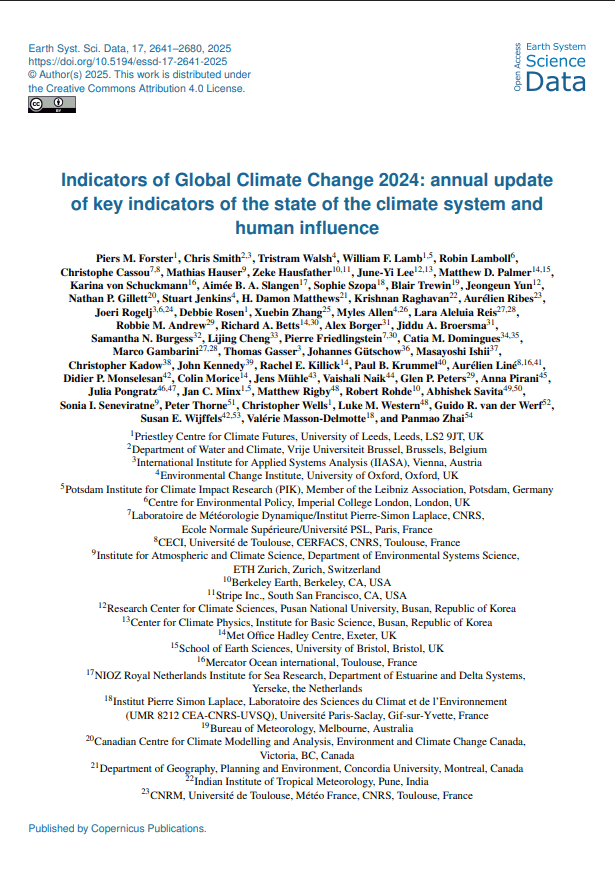The "Indicators of Global Climate Change 2024" report presents the latest annual update on key indicators of climate change, based on methodologies from the IPCC Sixth Assessment Report. The findings show that human-induced climate change continues to accelerate, with global surface temperatures for 2024 estimated at 1.52 °C above pre-industrial levels. Human-induced warming now accounts for 1.36 °C of that total, with a decade-long warming rate of 0.27 °C per decade (2015–2024), the highest observed in the instrumental record. The report attributes this rise to record-high greenhouse gas emissions, averaging 53.6 Gt CO₂e per year over the past decade—and a reduction in aerosol-based cooling. The study also includes new indicators for sea-level rise and land precipitation changes, along with updates on greenhouse gas concentrations, radiative forcing, and the remaining carbon budget for 1.5 °C.
Additionally, the report identifies continuing growth in atmospheric concentrations of CO₂, CH₄, and N₂O, with 2024 levels at 422.8 ppm, 1929.7 ppb, and 337.9 ppb respectively. Emissions of non-methane short-lived climate forcers (SLCFs), such as SO₂ and black carbon, have generally declined or stabilized post-COVID, though regional biomass burning and agricultural practices remain significant contributors. Effective radiative forcing (ERF) from anthropogenic sources has increased to 2.97 W/m² in 2024, up from 2.72 W/m² in 2019. Earth's energy imbalance, primarily stored in ocean heat has also grown, indicating intensified planetary warming. The report emphasizes the urgent need for updated, science-based decision-making as we head deeper into the critical 2020s.





